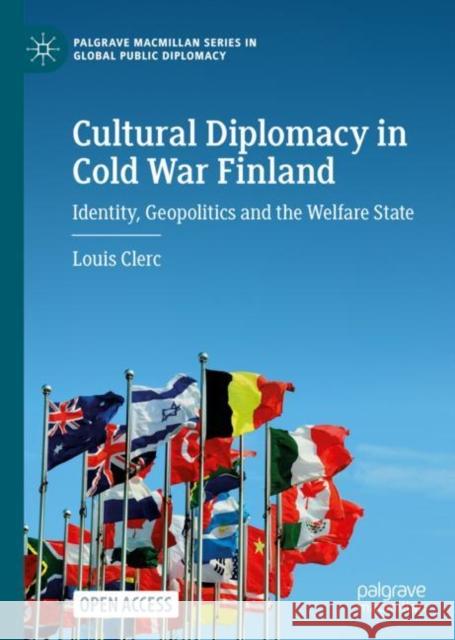Cultural Diplomacy in Cold War Finland: Identity, Geopolitics and the Welfare State » książka
Cultural Diplomacy in Cold War Finland: Identity, Geopolitics and the Welfare State
ISBN-13: 9783031122040 / Angielski / Twarda / 2022 / 258 str.
Cultural Diplomacy in Cold War Finland: Identity, Geopolitics and the Welfare State
ISBN-13: 9783031122040 / Angielski / Twarda / 2022 / 258 str.
(netto: 192,11 VAT: 5%)
Najniższa cena z 30 dni: 192,74
ok. 22 dni roboczych
Bez gwarancji dostawy przed świętami
Darmowa dostawa!
This open access book explores the organization and evolution of Finland’s Cold War cultural diplomacy (1945-1975) as the basis for a reflection on the country’s foreign relations, the link between culture and politics, small states’ autonomy during the Cold War, and the porosity of the East-West divide.The book offers a historical survey of the development of Finland’s cultural diplomacy as part of the Finnish state’s foreign activities. In its empirical parts, it focuses on archives drawn from the Finnish Ministry of Foreign Affairs and the Ministry of Education in order to explain Finland’s cultural diplomacy as the result of the country’s foreign policy orientations, interactions between domestic and foreign policy, and the expansion of state activities in the artistic, educational, and cultural sectors. Various reflections and reports on foreign cultural relations highlight the role of identity concerns, cultural relations, geopolitics and economic imperatives in the development of a specifically Finnish cultural diplomacy. Furthermore, the book focuses on specific aspects and events, considering for instance the organization and evolutions of Finland’s cultural relations with the USSR, the role of cultural treaties, academic exchanges and scientific cooperation, “cultural exports” and the marketization of culture, overlaps between cultural relations and high politics.
This open access book explores the organization and evolution of Finland’s Cold War cultural diplomacy (1945-1975) as the basis for a reflection on the country’s foreign relations, the link between culture and politics, small states’ autonomy during the Cold War, and the porosity of the East-West divide.The book offers a historical survey of the development of Finland’s cultural diplomacy as part of the Finnish state’s foreign activities. In its empirical parts, it focuses on archives drawn from the Finnish Ministry of Foreign Affairs and the Ministry of Education in order to explain Finland’s cultural diplomacy as the result of the country’s foreign policy orientations, interactions between domestic and foreign policy, and the expansion of state activities in the artistic, educational, and cultural sectors. Various reflections and reports on foreign cultural relations highlight the role of identity concerns, cultural relations, geopolitics and economic imperatives in the development of a specifically Finnish cultural diplomacy. Furthermore, the book focuses on specific aspects and events, considering for instance the organization and evolutions of Finland’s cultural relations with the USSR, the role of cultural treaties, academic exchanges and scientific cooperation, “cultural exports” and the marketization of culture, overlaps between cultural relations and high politics.











